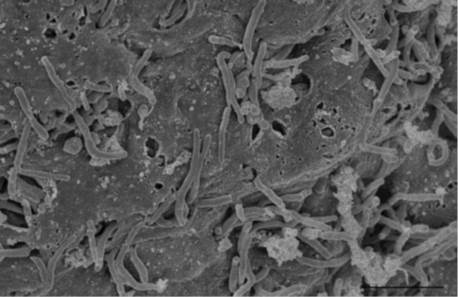Boosting Invasive Species Cooperation Using Zebra Chip as a Model
When an invasive species is first detected in an area, the initial response is critical. Like with a cancer, the correct early detection and response can make a big difference in controlling the spread and severity of the outbreak.
 To help make that initial response as effective as possible, the Western IPM Center Invasive Species Signature Projectis developing protocols for invasive weeds, insects and diseases. Subgroups focused on each area are developing those protocols, using current invasive species issues as models.
To help make that initial response as effective as possible, the Western IPM Center Invasive Species Signature Projectis developing protocols for invasive weeds, insects and diseases. Subgroups focused on each area are developing those protocols, using current invasive species issues as models.
The plant pathogen subgroup selected Candidatus Liberibacter solanacearum, transmitted by psyllids, which causes zebra chip disease of potato and vein greening of tomato. The University of Arizona’s Judith Brown, School of Plant Sciences, led the subgroup.
“Our charge was four-fold,” she said. “Get the group together and set priorities and goals. Second, draft an invasive species plan that could serve as a model for other invasive pathogen introductions or emergences. Third, hold a symposium to raise awareness and connect with other scientists and stakeholders in the region, and fourth, pursue possibilities for funding to study the problem in greater detail, given that it is a new vector-pathogen complex that is associated with diseases in a number of solanaceous crops.”
The first three of those goals have been achieved, and the group’s draft document, “Guidelines for Forming and Conducting a Local or Regional Invasive Species Coordinating Group,” is available here. The symposium was held at the American Phytopathological Society’s Joint Caribbean-Pacific Division meeting in 2013.
In many states, Brown said, the relationships between the university and experiment station scientists involved in pathology, weed science, entomology and abiotic stress research and the state and regional regulatory agencies are not as strong as they should be to detect and respond to invasive species and other kinds of outbreaks that could be disastrous to agriculture.
“We recognized some years ago in Arizona that we didn’t have relationships between all of the groups that would respond to an invasive species,” Brown said. “So now our Arizona Plant Diagnostic Network, which is a member of the National Plant Diagnostic Network, meets twice a year so everybody knows each other and has the opportunity to share observations and information about potential new problems involving invasive species, as well as resurgent endemic problems.”
The draft guidelines outline generally the ideal makeup of the coordinating group, the activities and responsibilities of members, and offers protocols for detection, response and mitigation, and recovery. It also highlights various challenges invasive species coordinating groups may encounter and offers some possible solutions.
“The next step could be to test the draft plan using a recent invasive species, such as the citrus greening pathogen, Ca. Liberibacter asiaticus, to identify gaps, make necessary revisions and identify aspects that could be improved or done better,” said Brown.
Learn more at the Invasive Species Signature Project webpage